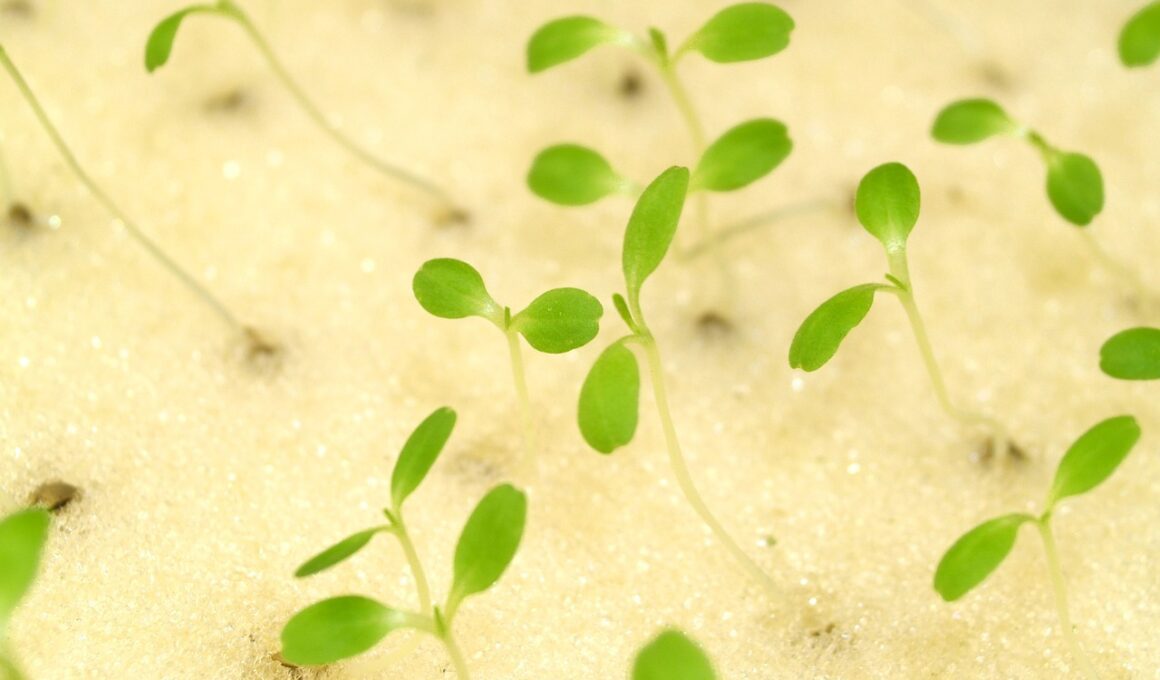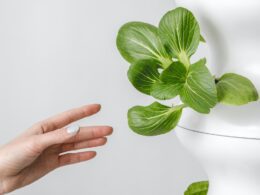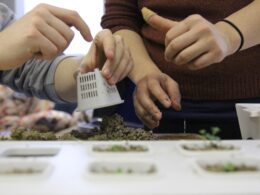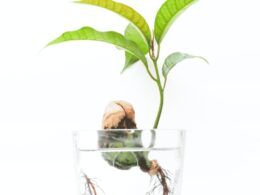Are you one of the many gardeners who have been using Epsom salt to boost your plants’ growth and health? While Epsom salt is a popular and affordable way to provide magnesium and sulfur to your plants, not all plants react well to it. In fact, some plants may even suffer from Epsom salt toxicity or imbalances. That’s why it’s crucial to know which plants don’t like Epsom salt, so you can avoid damaging your precious greenery.
In this article, we’ll take a closer look at the effects of Epsom salt on plants and which ones are sensitive to it. We’ll also discuss the symptoms of Epsom salt toxicity and imbalance, as well as the best practices for using Epsom salt in your garden.
By the end of this article, you’ll have a better understanding of which plants to avoid using Epsom salt on, and how to use it safely and effectively on the ones that do benefit from it.
So, let’s dive in and learn more about what plants don’t like Epsom salt.
Understanding Epsom Salt and its Benefits for Plants
Get ready to learn about the wonders of this natural mineral and its magical effects on your green friends. Epsom salt, also known as magnesium sulfate, has been used for centuries as a natural remedy for various ailments. However, did you know that it is also beneficial for your plants?
Epsom salt is a mineral compound that contains both magnesium and sulfur, which are essential nutrients for plant growth. Uses and applications of Epsom salt in gardening are widespread. It can be used as a fertilizer, soil conditioner, and pest deterrent.
When used as a fertilizer, Epsom salt promotes healthy plant growth by providing the necessary nutrients for the plant’s development. It also helps to improve soil quality by increasing its ability to retain moisture and nutrients. Additionally, Epsom salt can repel pests such as slugs and snails, which can damage plants and crops.
Chemical composition and properties of Epsom salt make it a safe and effective option for your plants. Magnesium and sulfur are both naturally occurring elements that are essential for plant growth. When applied to the soil, Epsom salt dissolves quickly and is readily available for the plant to absorb. Unlike artificial fertilizers, Epsom salt does not contain harmful chemicals that can harm your plants or the environment.
Incorporating Epsom salt into your gardening routine can have numerous benefits for your plants. From promoting healthy growth to repelling pests, this natural mineral is a versatile and safe option for any type of plant. So, the next time you’re looking for a natural way to care for your green friends, consider using Epsom salt.
Plants that are Epsom Salt-Friendly
You’ll love knowing which greenery happily benefits from the use of this mineral-rich compound. Epsom salt is a great way to boost the growth of your plants, but not all plants will benefit from it.
Indoor plants such as ferns, orchids, and spider plants thrive with the use of Epsom salt. These plants are known to have a high magnesium requirement, which is found in Epsom salt. The added magnesium helps improve the plant’s overall health, making it grow stronger and more vibrant.
On the other hand, outdoor plants like roses, tomatoes, and peppers can also benefit from Epsom salt. These plants require a good amount of magnesium to produce healthy fruits and flowers. Epsom salt can help improve the plant’s nutrient uptake, making it grow more vigorously. However, it’s important to note that not all outdoor plants will benefit from Epsom salt.
Some plants like azaleas and rhododendrons prefer acidic soil, and Epsom salt can change the pH level, making it unsuitable for these plants to grow.
Epsom salt is also a popular choice for hydroponics, which is a method of growing plants in water without soil. Hydroponic plants like lettuce and herbs can benefit from the added magnesium in Epsom salt, making them grow faster and healthier. However, it’s important to be cautious when using Epsom salt in hydroponics as too much of it can lead to nutrient imbalances in the water.
As with any plant, it’s important to do your research and use Epsom salt in moderation to avoid any negative effects on your plants.
Plants that are Sensitive to Epsom Salt
If you’re wondering which greenery to avoid when using this mineral-rich compound, be aware that some plants are sensitive to its effects. One of the most sensitive types of plants is those that grow in acidic soil. This is because Epsom salt can lower the pH level of the soil, making it more alkaline. If your plants prefer an acidic environment, it’s best to avoid using Epsom salt altogether.
Another type of plant that is sensitive to Epsom salt is those that are drought-tolerant. This may seem counterintuitive since Epsom salt is often used to help plants retain moisture and reduce water stress. However, some drought-tolerant plants have specific adaptations that allow them to thrive in dry conditions. Adding Epsom salt to their soil can disrupt this delicate balance and cause them to wilt or even die.
If you have sensitive plants in your garden, don’t worry. There are alternatives to Epsom salt that you can use to nourish your greenery. You can try using seaweed or fish emulsion, which are both rich in nutrients and gentle on most plants. Alternatively, you can make your own organic fertilizers using compost or worm castings.
These natural options are not only safer for your plants, but they are also better for the environment.
Symptoms of Epsom Salt Toxicity or Imbalance
Excessive use or incorrect application of Epsom salt can lead to toxicity or imbalance in your plants, which can cause serious harm to their growth and health. It’s important to be aware of the symptoms of Epsom salt toxicity or imbalance, so you can take appropriate action to prevent or treat them.
Here are three symptoms to watch out for:
-
Leaf burn: If you notice brown spots or discoloration on the leaves of your plants, it could be a sign of Epsom salt toxicity. This can happen when the salt accumulates in the soil and interferes with the plant’s ability to absorb water and nutrients.
-
Stunted growth: Epsom salt imbalance can also cause plants to grow slowly or not at all. This is because the salt can disrupt the balance of minerals in the soil, making it difficult for the plant to get the nutrients it needs to grow.
-
Root damage: Too much Epsom salt can also damage the roots of your plants, which can make them more vulnerable to disease and pests. If you notice that your plants are wilting or drooping, it could be a sign that the roots have been damaged by the salt.
To prevent Epsom salt toxicity or imbalance, it’s important to follow the recommended guidelines for application and avoid overuse. If you do notice symptoms of toxicity or imbalance, there are treatment options available, such as flushing the soil with water or adjusting the pH levels.
By being aware of the risks and taking appropriate action, you can help ensure that your plants stay healthy and thrive.
Best Practices for Using Epsom Salt in Your Garden
If you’re planning to use Epsom salt in your garden, there are some best practices you should follow to ensure success.
Start by testing your soil and water quality to determine if your plants actually need Epsom salt.
Then, make sure you’re using the recommended dosages to avoid toxicity or imbalance.
And if you’re looking for alternative fertilizers, there are plenty of options to choose from.
Testing Soil and Water Quality
You can easily determine the quality of your soil and water with a few simple tests, giving you valuable insights to help your garden thrive. Here are four tests that you can do right now:
-
pH Test: Measure the acidity or alkalinity of your soil and water using a pH test kit. Most plants prefer a slightly acidic soil with a pH range of 6.0 to 7.0.
-
Soil Nutrient Test: Test your soil for nutrient deficiencies using a soil test kit. This will help you determine which nutrients your plants may be lacking and what kind of fertilizer to use.
-
Water Quality Test: Check the quality of your water by testing for contaminants like lead, chlorine, and pesticides. You can use a water test kit or send a sample to a lab for analysis.
-
Water Filtration: If your water quality is poor, consider using a water filtration system to remove contaminants before watering your plants.
By conducting these tests, you can ensure that your soil and water are optimal for plant growth. This will help you avoid common plant nutrient deficiencies and ensure that your plants are healthy and thriving.
Following Recommended Dosages
To ensure the health and growth of your garden, it’s important to follow recommended dosages for fertilizers and nutrients. When it comes to using Epsom salt as a fertilizer, proper application is key.
While Epsom salt can benefit some plants by providing magnesium and sulfur, using too much can harm or even kill your plants. Before applying Epsom salt, it’s important to determine your soil’s magnesium and sulfur levels.
If your soil is already rich in these nutrients, adding more can lead to an imbalance that can harm your plants. Additionally, using too much Epsom salt can increase soil salinity, which can also harm your plants.
To avoid potential risks, it’s best to follow the recommended dosage for your specific plants and soil type.
Alternatives to Epsom Salt Fertilizers
Now that you know how to follow recommended dosages for Epsom salt fertilizers, you may be wondering if there are alternatives. While Epsom salt can be a beneficial fertilizer for many plants, some may not respond well to it.
If you’re looking for organic fertilizers and natural soil amendments that won’t harm your plants, here are some options to consider:
-
Compost: Composting your kitchen and yard waste can provide a rich source of nutrients for your plants. It’s easy to make your own compost, and you can customize it to meet the specific needs of your plants.
-
Fish emulsion: Fish emulsion is a natural fertilizer made from fish waste. It’s high in nitrogen, which is essential for plant growth. You can find fish emulsion at most garden centers, or you can make your own by composting fish scraps.
-
Bone meal: Bone meal is a natural fertilizer made from ground up animal bones. It’s high in phosphorus, which is important for root development. Bone meal is a slow-release fertilizer, which means it will provide nutrients to your plants over time.
By using organic fertilizers and natural soil amendments, you can provide your plants with the nutrients they need without harming them. Plus, you’ll be doing your part to protect the environment by reducing the use of synthetic chemicals.
Frequently Asked Questions
What is Epsom salt made of?
If you’re curious about what Epsom salt is made of, you’ll be interested to know that it’s actually a mineral compound consisting of magnesium, sulfur, and oxygen. Specifically, it contains high levels of magnesium, which is why it’s often used as a natural remedy for muscle aches and pains.
Epsom salt is produced industrially, and is widely available in stores and online. While it’s generally safe to use, it’s important to note that not all plants like Epsom salt. If you’re looking for ways to enhance your garden, it’s a good idea to research which plants are compatible with Epsom salt before using it.
Can Epsom salt be harmful to humans?
If you’re considering using Epsom salt in your garden, it’s important to know about its effects on skin and ingestion risks. While Epsom salt is generally considered safe for human use, it’s important to avoid ingesting large amounts or applying it directly to broken or irritated skin.
Additionally, it’s important to consider compatibility with other fertilizers when using Epsom salt for plant health. While Epsom salt can be beneficial for some plants, it may not be compatible with others and can actually harm their growth.
By being mindful of these potential human concerns and plant compatibility issues, you can safely and effectively use Epsom salt in your gardening routine.
How often should Epsom salt be applied to plants?
To ensure the health of your plants, it’s important to know the proper frequency application of Epsom salt. The best plants for Epsom salt are those that require magnesium, such as tomatoes, peppers, and roses.
For these plants, it’s recommended to apply Epsom salt once a month during the growing season. However, it’s important to note that not all plants benefit from Epsom salt. Some plants, such as ferns and palms, do not require magnesium and can actually be harmed by the salt.
Therefore, it’s important to research which plants benefit from Epsom salt and which ones do not before applying it to your garden. By following these guidelines, you can ensure the healthy growth of your plants while avoiding any potential harm caused by improper use of Epsom salt.
Can Epsom salt be used as a pesticide?
Looking for natural alternatives to chemical pesticides? Epsom salt can be a great option!
Not only is it chemical-free, but it’s also inexpensive and easy to use. Simply mix 2 tablespoons of epsom salt with a gallon of water and use it to spray on your plants.
This solution can help deter pests like aphids, spider mites, and slugs. Plus, it won’t harm beneficial insects like bees and ladybugs.
So next time you’re looking for a chemical-free solution to your pest problems, give epsom salt a try!
Can all types of soil benefit from Epsom salt?
If you’re looking to give your vegetable garden a boost, adding Epsom salt to your soil can be a game-changer. Epsom salt, also known as magnesium sulfate, can improve soil structure, aid in nutrient absorption, and promote healthy plant growth. It’s also a great way to strengthen fruit trees, encouraging stronger roots and more fruitful harvests.
However, it’s important to note that not all plants benefit from Epsom salt, so be sure to do your research before adding it to your garden. Overall, the benefits of Epsom salt on vegetable gardens and fruit trees make it a great addition to any garden, as long as it’s used correctly.
Conclusion
So now you know that Epsom salt can be beneficial for some plants, but not all. It’s important to understand which plants are Epsom salt-friendly and which ones are sensitive to it.
If you use Epsom salt on plants that don’t like it, you risk causing toxicity or imbalance, which can harm your plants. To make sure you’re using Epsom salt correctly, always follow best practices.
Start with a small amount and gradually increase it over time. Monitor your plants for any signs of stress or toxicity and adjust accordingly. With the right knowledge and care, you can use Epsom salt to help your plants thrive.









